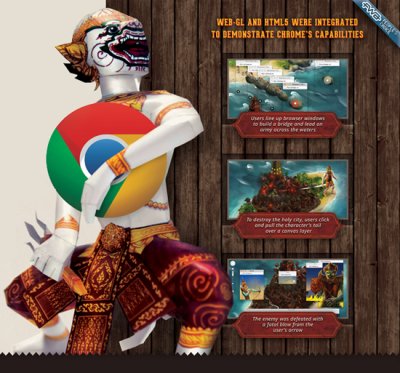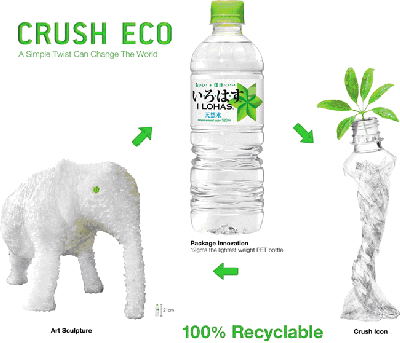A survey, conducted by the the Association of National Advertisers, (ANA) found only 21% of marketing leaders were satisfied with the performance of their global marketing strategy and just 22% were satisfied with how their global marketing is co-ordinated. The task of managing and executing a multi-market brand launch is a formidable one but the ANA had this advice for brands up for the challenge:
- Use a fixed brand positioning
- Focus on universal truths
- Tell a powerful story
- Find the right organisation structure
- Be open to ideas from local offices around the world
I've dug into the Warc archive to showcase examples of brands that have implemented successful launch strategies outside of their home market.
How do you launch a product in a new territory against well-established competitors? Google Chrome, the web browser, wanted to show, rather than tell, consumers in Thailand about its features, security and services. Local insight revealed that Thai consumers enjoy traditional storytelling, such as Ramakien, an epic and emotional tale that had been passed down through generations. Chrome modernised storytelling through interactive experiences that demonstrated Chrome’s features, security and Google’s services. During the campaign there was a 53% increase in usage, making it the most widely used browser in Thailand.

LYNX: Launching the LYNX effect in China
Lynx, owned by Unilever, is the top-selling male body spray in the world and is sold in over 90 countries. This case study describes how Lynx launched both Fragrance Body Spray and Shower Gel simultaneously in China. The dual-product launch would give Lynx great scale and presence in the market. Nonetheless, it would be a challenge to launch in China as local insight revealed smelling good was not a top priority for the target audience of men aged 20-25. To elevate the importance of smelling good and legitimise the use of the fragrance Lynx leveraged the power of celebrity, (Edison Chen), to convey the message that Lynx attracts the opposite sex and should be used responsibly. It garnered over 170 million content views online and Lynx became China’s number one brand in male deodorant and shower gel within three months.
I Lohas – Crush Eco – A simple choice can change the world
Coca-Cola Japan had long faced a serious problem. How do you launch a local water brand in the face of strong imported brands and established local players? And how do you create differentiation when the product itself is simply water? Its strategy was to position I Lohas as an environmentally friendly local brand. A distinctive approach to packaging design was at the heart of the campaign: the bottle could be crushed, making it easy to recycle. Other media included events, PR, social media, and more traditional mainstream press and TV advertising. I Lohas became the No.1 water brand in Japan in just six months. To date, the brand has sold 800 million bottles, growing to three times the size of its closest rival and achieving more than 40% market share.

Windows 8: Global Launch Campaign
This case study describes the media optimisation research behind the global launch campaign of Windows 8, the latest iteration of operating system from Microsoft, the technology and software company. Launched in 42 countries, the research element included a global pre-testing engine that predicted advertising effectiveness in 20 key markets, whilst globally-scaled in-market optimisation enabled tactical media investment decisions to be made throughout the campaign. The campaign itself targeted early adopters of technology, who are primarily into technology for social use and making their lives easier, and utilised a wide range of media, focusing on the main value propositions of Windows 8. Creative was customised to region and media plans that were locally tailored. The campaign drove sales of 70 million copies of the operating system in less than four months. The pre-testing and optimisation research is estimated to have generated an increase in media effectiveness of some $200m, representing a payback of 20:1.
Smirnoff 'Nightlife': How a social media and experiential strategy renewed Diageo’s vodka brand
Broadening the scope a little, this event report describes the launch and development of Smirnoff vodka's 'Nightlife' initiative, a global campaign driven by social media and experiential, night-clubbing events. Diageo wanted a campaign that would immerse consumers in the brand and drive sales. The 2010 launch saw consumers in 50 countries voting for their favourite local nightclub via social media, culminating in 14 national winners hosting an event featuring the best elements of their club in another country. In partnership with MTV networks, it generated 1.8 billion media impressions. In 2011, the campaign took a celebrity-led approach by creating a dance competition judged by Madonna. The 2012 campaign involves RFID-enabled wristbands to automatically post partygoers’ activities to a digital diary on Facebook during a specific night in November.

Peter Field, a marketing consultant, conducted an analysis of multi-market case studies and found that successful multi-national campaigns are a rarity. Field’s analysis suggests that success appears to depend on powerful emotional insights, based on emotional engagement, powerful passions or enjoyable experiences. Focusing on the product benefits alone will not suffice. For example, trying to express healthy eating across very different national food cultures is a challenge because food is notoriously culturally sensitive. Brands analysed include Pampers, Nike, Magnum, Puegeot, Johnnie Walker and Olivio/Bertolli.

Warc subscribers may like to browse the Brand Launches Topic Page and Multinational Campaigns Topic Page for more on this subject.

